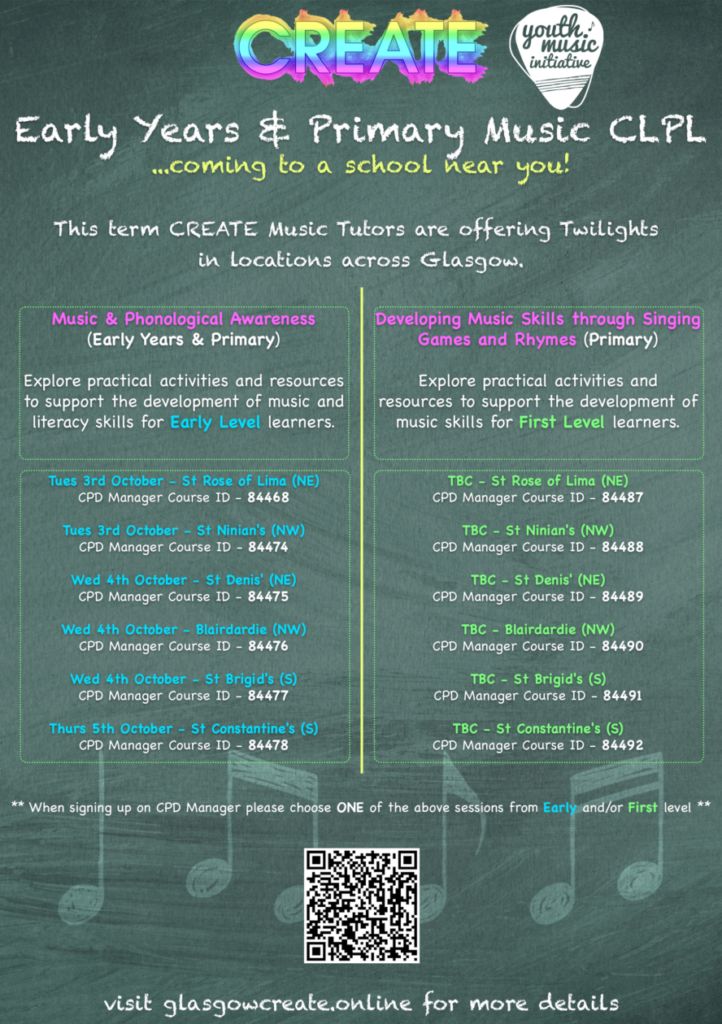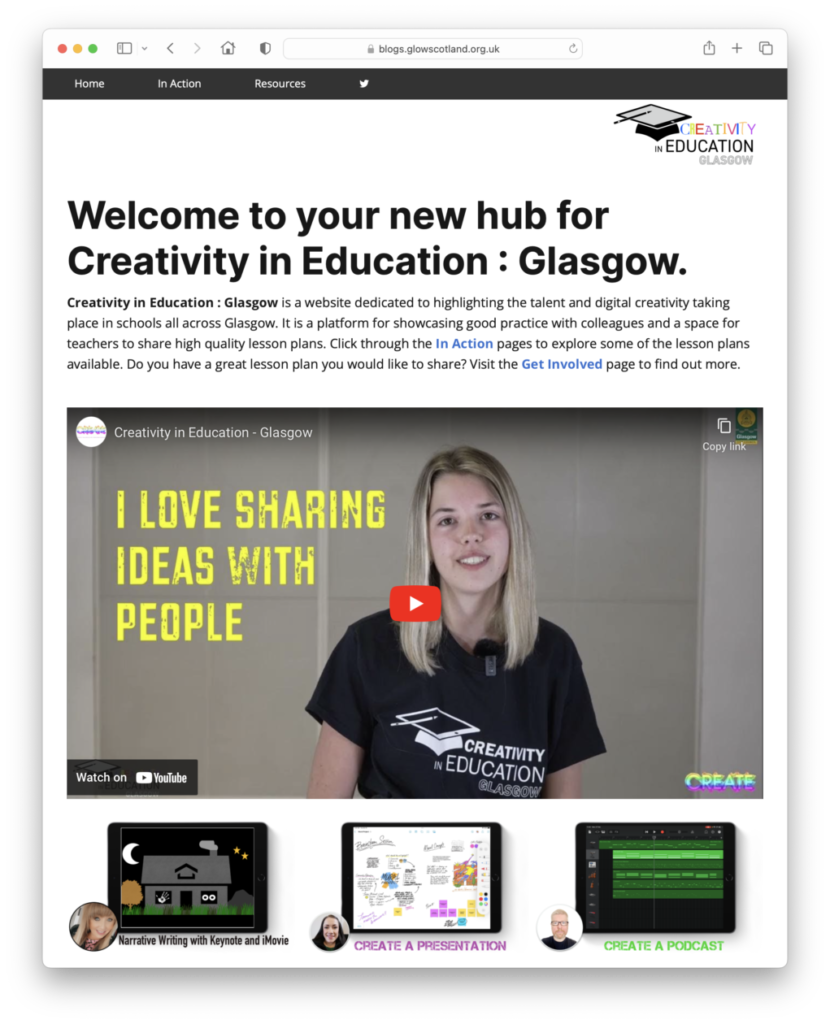Experiences and Outcomes:
I can sing and play music from a range of styles and cultures, showing skill and using performance directions and/or musical notation. EXA 2-16a
I can use my voice, musical instruments and music technology to experiment with sounds, pitch, melody, rhythm, timbre and dynamics. EXA 2-17a
Inspired by a range of stimuli and working on my own and/or with others, I can express and communicate my ideas, thoughts and feelings through musical activities. EXA 2-18a
I have listened to a range of music and can respond by discussing my thoughts and feelings. I can give and accept constructive comment on my own and others’ work. EXA 2-19a
I have experienced the energy and excitement of presenting/performing for audiences and being part of an audience for other people’s presentations/performances. EXA 2-01a
Skills:
- Explore rhythm by copying, creating and layering patterns of sound
- Continue to show respect for classroom instruments
- Use digital technology to record sound (video and/or sound)
- Listen to recordings of own/others work and respond with constructive feedback
- Recognise the timbre of different instruments by how they are played e.g. shaken, struck, blown or strummed
- Use instruments to accompany songs/enhance music of different styles
- Listen to a range of live and/or recorded music and respond by expressing personal views
- Understand and convey the mood/character of the song with increasing depth, e.g. using body language, facial expression
- Listen to different styles of music from Scotland and comment on musical concept including instruments, voices, tempo, dynamics, pitch, structure (intro, verse, chorus, outro, repetition) and texture (unison, harmony, solo, ensemble, with/without accompaniment)
- Express a response to music through other areas of Expressive Arts by creating a piece of art, drama or dance.



